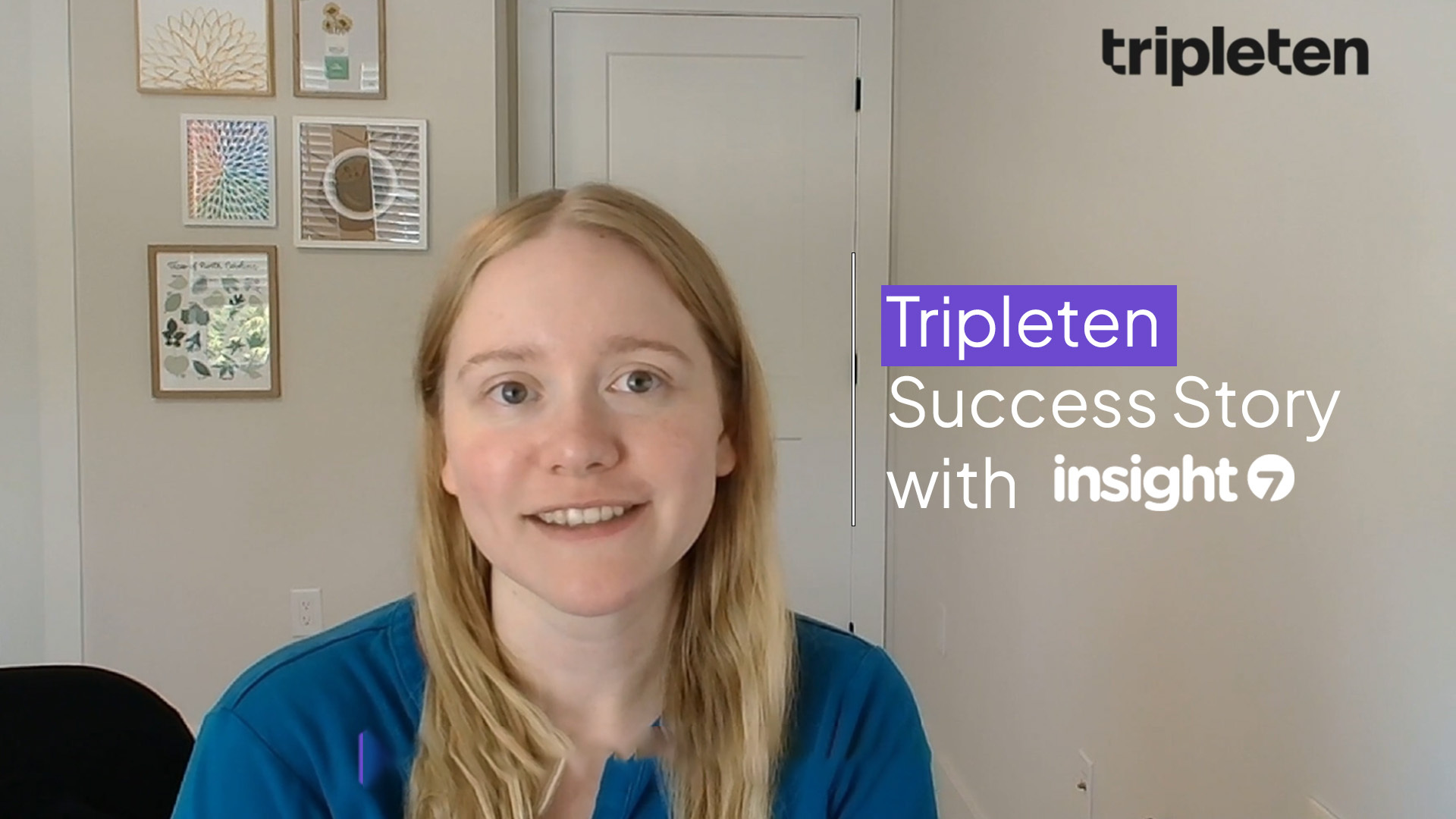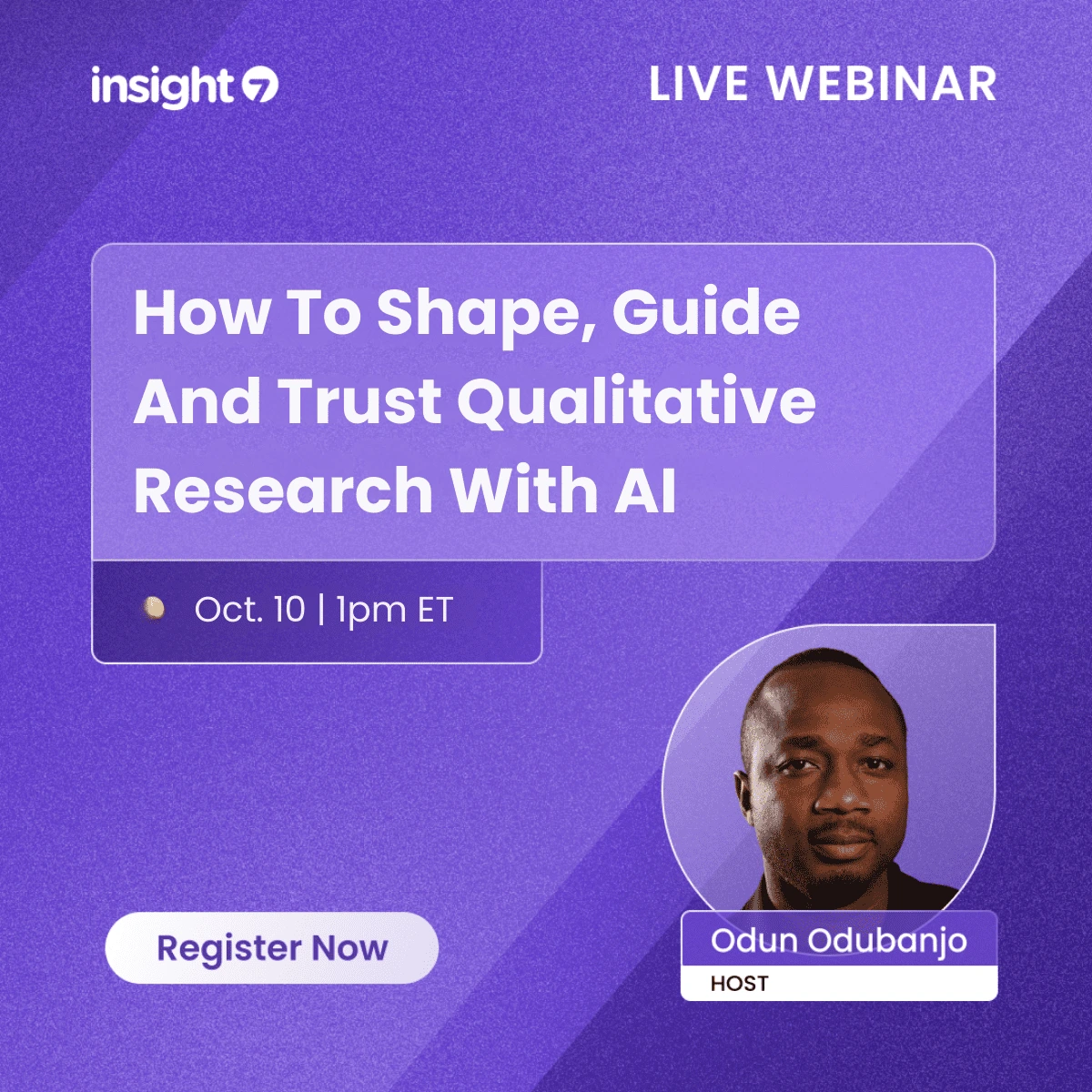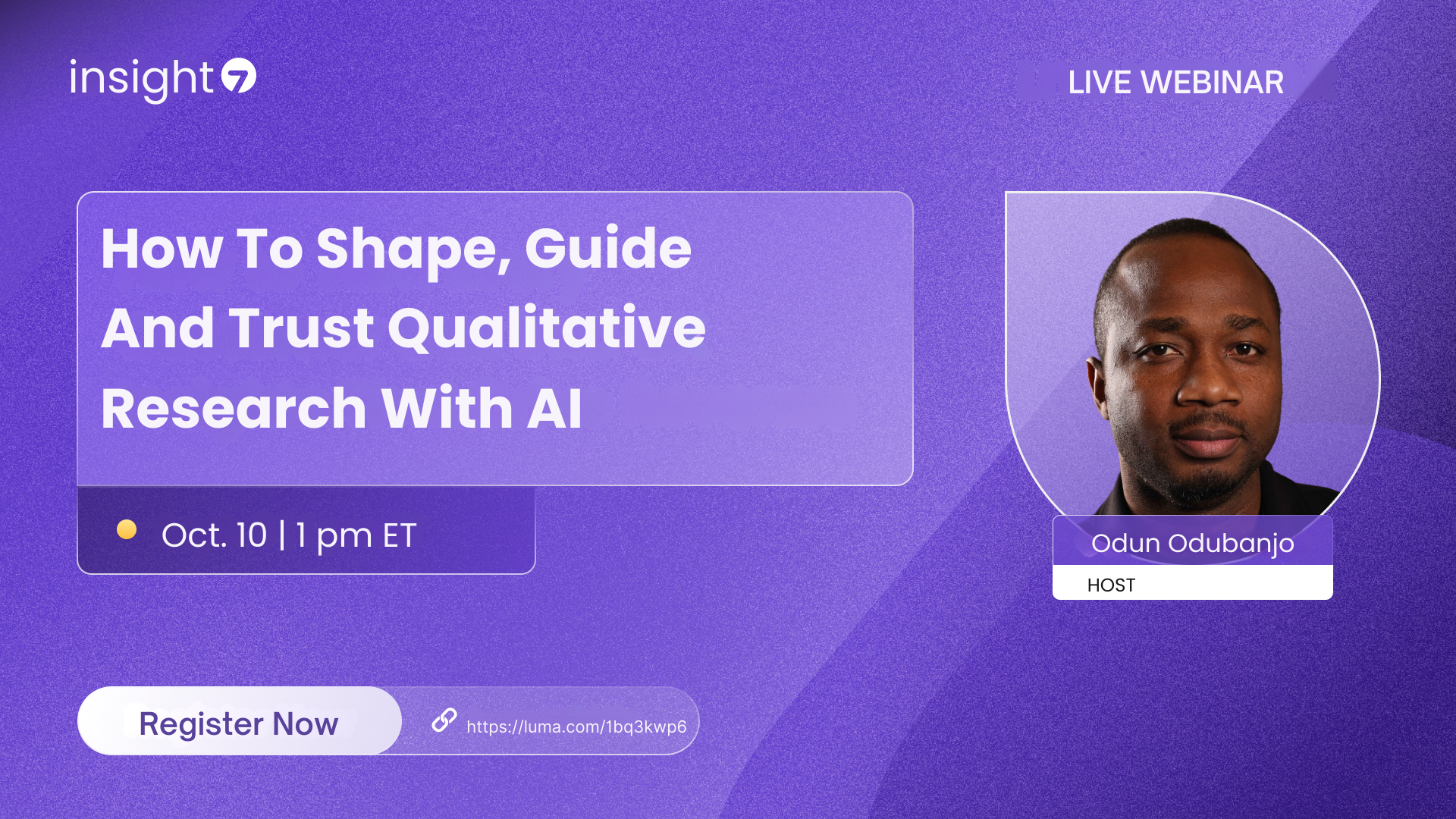How to generate themes from conversations
-
Bella Williams
- 10 min read
Conversation Theme Extraction serves as a vital tool in understanding the myriad discussions that take place within organizations. Imagine sifting through countless dialogue threads to unveil underlying themes that inform strategies, enhance communication, and improve customer satisfaction. This section guides readers through the foundational concepts that drive effective conversation analysis in various contexts.
With insight into how to distill meaningful themes from conversations, businesses can better align their services with customer needs. By identifying common threads and patterns, organizations can not only boost efficacy but also foster stronger engagement with their audiences. In the following sections, we will delve deeper into the methods and tools available for successfully extracting themes from conversation data.
Generate visualizations from your qualitative data. At Scale.

Understanding the Basics of Conversation Theme Extraction
Conversation Theme Extraction is an essential step in understanding the underlying messages within dialogues. By analyzing conversations, one can uncover patterns, sentiments, and themes that inform decision-making and strategy. First, it is important to collect conversations systematically, ensuring they are organized for analysis. This creates a foundation for meaningful insights.
Next, analyzing conversation patterns involves identifying recurring topics or phrases that appear throughout the dialogues. This process may include examining emotional responses or frequent questions to help clarify customer needs or preferences. Finally, synthesizing the gathered data into cohesive themes provides actionable insights that can enhance communication strategies and improve engagement. By mastering these basics, anyone can effectively extract themes from conversations, turning dialogue into valuable knowledge.
Why Conversation Theme Extraction is Important
Conversation theme extraction serves as a crucial tool for businesses aiming to understand the underlying trends and patterns in customer interactions. By accurately identifying themes within conversations, companies can gain insights into customer needs and preferences, enhancing their overall strategy. This systematic process enables organizations to glean information that can guide product development, marketing efforts, and customer service improvements.
Furthermore, effectively extracting themes allows organizations to streamline their decision-making processes. When customer feedback and signals are swiftly translated into actionable insights, companies can act quickly in response to market demands. This agility is vital in today's fast-paced business environment, where being able to adapt can set a company apart from its competitors. In summary, conversation theme extraction not only fosters greater understanding of customer relationships but also equips businesses with the tools to remain relevant and competitive in their field.
Identifying Key Elements in Conversations
Key elements in conversations often hold the foundational insights that drive meaningful themes. To effectively extract themes from conversations, you must first focus on the critical components of dialogue, such as intentions, emotions, and responses. Recognizing these elements can enhance your understanding of underlying customer needs and preferences, enabling you to formulate actionable insights.
When analyzing conversations, consider the following essential aspects:
- Speaker Intent: Identify the motivations behind each participant's words.
- Emotional Tone: Pay attention to the emotions conveyed, as they significantly influence responses.
- Key Topics: Extract recurring subjects or issues identified during the discussions.
- Response Patterns: Note how participants engage with each other, including agreement, disagreement, or elaboration.
Understanding these elements allows you to synthesize a coherent narrative from a sea of data, ultimately leading to successful conversation theme extraction and informed decision-making.
Understanding the Basics of Conversation Theme Extraction
Conversation theme extraction is a crucial technique used to identify underlying patterns and insights from discussions. It can transform raw dialogue into structured themes that offer valuable perspectives. To begin this process, it's essential to focus on key elements within the conversation, such as participant intent, emotional tone, and recurring topics.
A structured approach involves closely analyzing dialogue to discern both explicit and implicit meanings. In conversations, participants may refer to shared experiences or terminology that hint at deeper themes. Not only does this method help in organizing conversations, but it also clarifies the participants' needs and concerns. This clear understanding aids in devising actionable strategies, driving engagement, and improving overall communication outcomes. Ultimately, mastering conversation theme extraction paves the way for enhanced insight generation and informed decision-making.
Evaluate Performance on Customer Calls for Quality Assurance.
Steps to Generate Themes from Conversations
To effectively generate themes from conversations, begin with collecting and organizing a comprehensive set of dialogue data. Start by transcribing audio recordings to ensure that every word is accurately captured. This foundational step allows for an in-depth analysis of the nuances in conversation. Once your transcripts are ready, group similar types of interactions or conversations together. This will help in identifying distinct segments for careful evaluation.
Next, analyze these organized conversations by looking for recurring phrases, ideas, or problems that arise. Use qualitative analysis methods to pinpoint commonalities and differences in responses. Once the analysis is completed, synthesize the findings into coherent themes. Group similar insights to form broader categories that reflect the essence of the conversations. This process of conversation theme extraction not only clarifies the data but also transforms individual insights into actionable themes that can reveal underlying trends and sentiments.
Step 1: Collecting and Organizing Conversations
Step 1 focuses on the crucial process of collecting and organizing conversations. Begin with gathering all available recordings of discussions, as these serve as the raw material for theme extraction. If these conversations are not already transcribed, it's essential to transcribe them into text format. This can often be done in bulk, enabling a more efficient process. Once the conversations are in written form, you can create a structured library of transcripts, allowing easy access for further analysis.
Next, you will want to categorize these organized transcripts. This can involve tagging conversations based on specific themes, topics, or sentiment. Establishing this system helps simplify later analysis, enabling a streamlined approach to identifying recurring motifs. Remember, the clearer your organization, the more effectively you can extract meaningful insights. This groundwork sets the stage for successful conversation theme extraction and enhances the accuracy of the themes you will ultimately derive from the data.
Step 2: Analyzing Conversation Patterns
To analyze conversation patterns effectively, it is essential to methodically break down the dialogue. Start by grouping similar interactions, which may reveal overarching themes that often go unnoticed in individual conversations. Not only does this process help identify recurring issues or sentiments, but it also aids in filtering out noise to pinpoint critical insights. By categorizing responses based on various factors—such as emotions expressed, specific topics discussed, or participants’ sentiments—you can gain a deeper understanding of underlying patterns.
Moreover, employing tools that support bulk transcription and analysis can enhance efficiency in conversation theme extraction. Once transcripts are generated, skimming through common phrases or keywords becomes simpler. This allows you to highlight significant pain points or desires expressed during discussions. Conclusively, by analyzing conversation patterns, you ensure that your themes don’t just stem from random occurrences but reflect genuine reflections and collective sentiment from participants.
Step 3: Synthesizing Themes from Data
Synthesizing themes from data involves distilling insights from conversations into coherent ideas. This process aids in understanding the larger narrative that emerges from individual discussions. At this stage, you will analyze the grouped data to identify patterns and key insights, which are crucial for conversation theme extraction.
Begin by organizing your conversation data into categories based on commonalities observed during analysis. Identify recurring themes and verify their relevance by measuring how frequently they arise. Once you have extensive data, employ qualitative analysis techniques to extract and summarize these themes. Visual aids like matrices can assist in mapping out this information clearly, showcasing major pain points and trends effectively.
Next, detail each theme, gathering supporting quotes and insights directly from the conversations. This enriches understanding and provides depth, ultimately transforming raw data into actionable strategies. By following these steps, you will successfully synthesize data into meaningful themes that illuminate the collective voice of your audience.
Tools for Effective Conversation Theme Extraction
Effective conversation theme extraction is essential for transforming raw dialogue into actionable insights. Organizations today generate vast amounts of customer interactions, but extracting meaningful themes from these conversations requires the right tools. Various software solutions streamline this process, enabling teams to identify patterns and derive actionable strategies efficiently.
When selecting tools for effective theme extraction, consider the following key options:
Insight7 – This platform offers self-service capabilities for analysis, enabling users to derive insights from data at scale while integrating diverse conversation formats.
MAXQDA – This tool specializes in qualitative analysis, robustly supporting researchers in organizing and coding conversations to discern recurring themes.
NVivo – A powerful software for qualitative data analysis, NVivo facilitates identifying and visualizing themes through advanced coding options.
Atlas.ti – This software provides sophisticated tools for managing textual data, allowing for systematic coding and theme development from conversations.
Quirkos – A user-friendly tool that simplifies the coding process, making it easier to visualize and analyze themes from customer dialogues.
By utilizing these tools, organizations can efficiently turn conversations into valuable insights, driving better business strategies and improving customer engagement.
Insight7
Insight7 delves into the process of Conversation Theme Extraction, an essential skill for transforming raw dialogue into meaningful insights. By examining conversations, one can identify recurring themes that reveal customer sentiment and opportunities for improvement. These themes act like the threads of a tapestry, weaving together insights that can guide strategic decision-making.
To effectively generate themes from conversations, consider these essential steps. First, collect and organize conversations systematically, ensuring each interaction is logged for easy access. Next, analyze conversation patterns to uncover common phrases or sentiments expressed by participants. Finally, synthesize these findings to identify key themes that resonate with your audience. By following this structured approach, you can convert casual dialogues into actionable strategies, positioning your business ahead of the curve. Embracing Conversation Theme Extraction not only aids in understanding customer needs but fosters a culture of proactive engagement and refinement in service delivery.
MAXQDA
MAXQDA serves as a powerful tool for Conversation Theme Extraction, enabling users to analyze and interpret qualitative data effectively. By organizing conversations into structured projects, it offers a streamlined way to uncover recurring themes. Users can quickly transcribe audio files and upload them into designated projects, allowing for more efficient data handling.
Additionally, MAXQDA provides various analytical features that help visualize trends and patterns from conversations. Instead of sifting through large amounts of text, users can generate matrices that summarize customer feedback across multiple discussions. This process not only simplifies data analysis but also ensures that valuable customer insights are not overlooked, particularly for marketing teams looking for impactful comments or testimonials. Overall, mastering the use of MAXQDA can significantly enhance the quality and effectiveness of Conversation Theme Extraction in any project.
NVivo
When it comes to Conversation Theme Extraction, utilizing software like NVivo can significantly enhance your analysis process. NVivo provides a powerful platform for organizing large collections of conversational data, making it easier to identify recurring themes. With NVivo, users can effortlessly import audio files, transcriptions, and documents into organized projects. This streamlined access to data allows researchers to quickly analyze various conversations side by side, leading to deeper insights.
A vital feature of NVivo is its ability to visualize data patterns and trends through queries and matrices. Users can tailor specific queries to gain insights into particular topics or sentiments expressed in the conversations. Furthermore, the summarization tools can highlight key patterns across multiple conversations, making it easier to draw conclusions. By employing NVivo effectively, researchers can enhance their understanding of customer sentiments, preferences, and emerging themes, ultimately improving decision-making and strategies within an organization.
Atlas.ti
In the realm of conversation theme extraction, employing specialized software can significantly enhance your analysis process. Our discussion focuses on Atlas.ti, a tool designed to help users sift through vast amounts of conversation data effortlessly. The platform enables users to create projects where they can collect and organize calls, making it easier to scrutinize various aspects of conversations.
When using Atlas.ti, you can import audio files, transcribe them, and analyze responses systematically. This streamlining aids in extracting trends and patterns across multiple dialogues. For instance, by formulating targeted questions about user feedback, Atlas.ti allows you to gather relevant insights swiftly. Observing these extracted themes can offer valuable context for decision-making, whether for marketing strategies or product development. Ultimately, utilizing Atlas.ti can elevate your ability to derive meaningful themes from conversations, making it an indispensable tool in your analytical toolkit.
Quirkos
Quirkos stands out as a user-friendly tool designed specifically for Conversation Theme Extraction. It simplifies the process of identifying and organizing themes by allowing users to visualize their conversations in an intuitive manner. As conversations are analyzed, users can tag segments of text with different themes and then rearrange them to reflect patterns and insights that emerge.
The strength of Quirkos lies in its ability to support qualitative analysis effectively. Users can create a visual representation of data, making it easier to grasp the underlying themes and identify key points. This visual format helps facilitate discussions, making it possible to uncover themes that might otherwise go unnoticed. By utilizing this tool, teams can navigate through conversations more efficiently while enhancing their ability to derive actionable insights. Ultimately, Quirkos transforms complex data into meaningful themes that drive better decision-making.
Conclusion on Conversation Theme Extraction
The process of Conversation Theme Extraction helps in distilling the essence of discussions into coherent themes. By systematically analyzing conversations, individuals and organizations can uncover insights that drive decision-making and improve outcomes. Recognizing the underlying patterns within dialogues allows for better understanding of sentiments and needs present in the discussions.
In conclusion, implementing effective Conversation Theme Extraction strategies ultimately leads to actionable insights. Emphasizing clarity and relevance in conversations fosters better communication and engagement. As organizations strive to harness the full potential of their discussions, refining these extraction techniques becomes essential for meaningful interaction and growth.
Generate visualizations from your qualitative data. At Scale.








